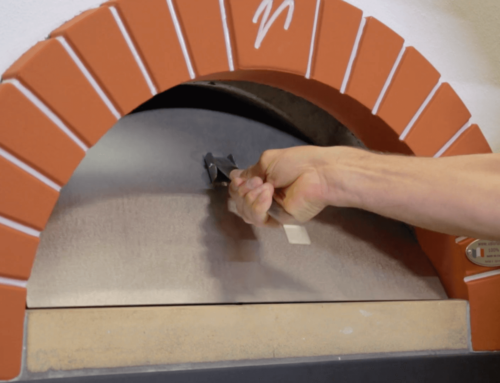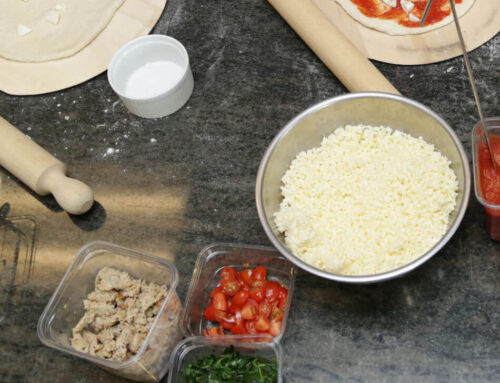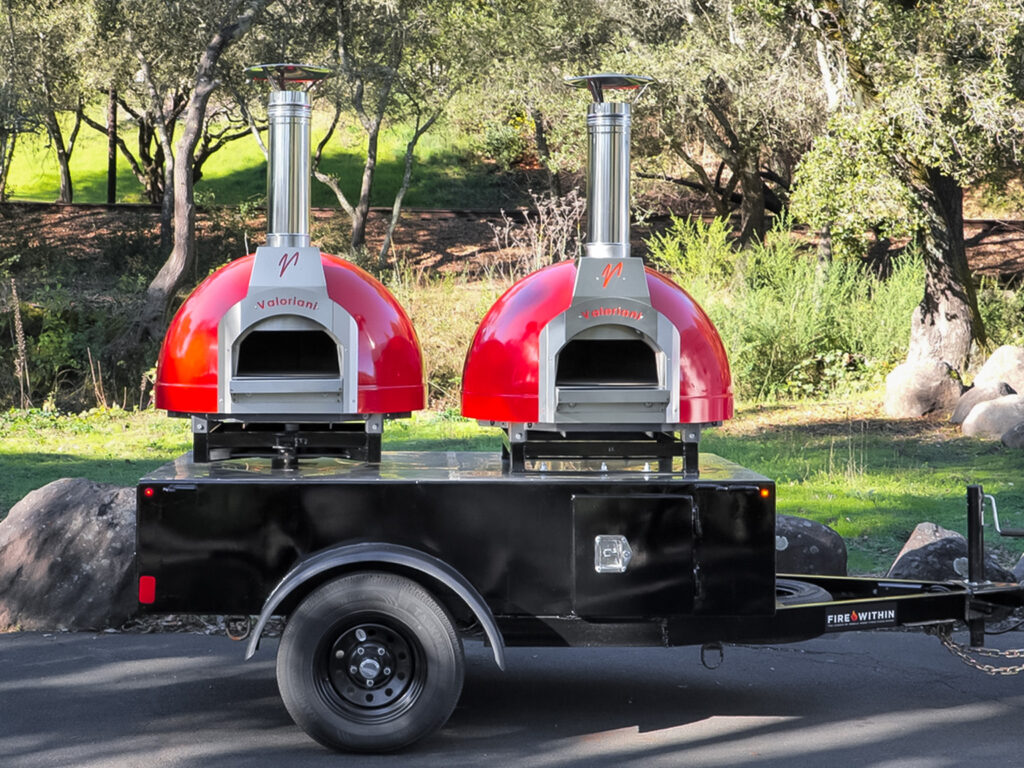What is Firebrick and why use it for the oven floor?
The word firebrick has no universal, specific definition we can site; you will find it used in conjunction with words like refractory and fire clay. Generally speaking, all of these terms are used to describe materials with the ability to withstand very high heat without falling apart.
One confusing thing about defining a firebrick is that the term has been used to describe different materials for various uses. For our purposes, we will concentrate on the nature of a modern firebrick and why it is the material of choice for a pizza oven floor.
Crucial Factors for Pizza Ovens
The floor in a wood burning oven is subjected to intense heat for long periods of time. The cooking temperature on the floor may be as high as 750˚F and the temperature under the fire will reach 1200 – 1400˚F.
The floor needs to store this high heat and allow the heat from the fire to move through it. Since heat rises and cooking food pulls heat out of the floor, the ability to conduct heat plays a large part in the preheat time and recovery time of the floor.
The floor is also the cooking surface for pizza and breads. Pizza dough has a very high percentage of water and the best crusts are achieved when this water can steam off into the floor and get cooked out of the dough quickly.
The floor is subjected to physical use with each firing. Sharp metal utensils are used to move pizzas on the floor, heavy cookware is slid across the floor and ash rakes move red-hot coals across the floor with each use.
The factors we pay the most attention to are:
- Strength and temperature ratings
- Thermal conductivity
- Porosity
- Abrasion resistance
So the goal for a wood fired pizza oven floor is to have an appropriate strength and temperature capacity, good thermal conductivity, appropriate porosity and high abrasion resistance. This combination is only found in a firebrick.
Composition of Firebrick
Clay is made up of various fine-grained rock materials and formed over long periods of time in the ground. Natural materials like alumina, silica and kaolinite, can give clay refractory qualities – the ability to withstand high heat. When clay is high in alumina, silica and kaolinite, it is called Fire Clay.
The first firebricks were simply fire clay dug from the earth, pressed and fired in a kiln. Industry, looking for improvements, started adding minerals to create mulite and silliminite in the body of the brick with iron and calcium being common ingredients.
Today firebricks share a specific process and grading scale to designate the characteristics and service duty of the brick. The fire clay and other materials need to reach a temperature that will melt them together. That bonding process is called sintering and is defined as the process of compacting and forming a solid mass of material by heat and pressure without melting it to the point of liquefaction.
The Sintering Process
- Mix water, binder, unfired materials, clay and additives
- Place in mold and press under approximately 8000 psi
- Fire at a low temperature to burn off binder
- Fire at approximately 3000˚F to fuse particles together
It is important to know that this sintering process reduces porosity and enhances strength and thermal conductivity to create the very nature of a firebrick.
Modern Firebrick
The elements a manufacturer can control are grain size, water content, additives, pressure and temperature. Eventually, it was determined alumina content was the best way to grade the quality of the brick with 38% alumina content as the minimum level to create a strong firebrick.
Like all conductors, a firebrick can range from a lightweight insulator (low density, high porosity, low strength, low alumina content) to a heavy conductor stronger than steel (very dense, low porosity, incredibly strong, high alumina content).
Industrial Firebrick Grading System
- Insulating
- Low duty
- Medium duty
- High duty
- Super duty
The higher duty firebrick will increase strength, thermal conductivity and abrasion resistance but lose porosity. Manufacturers adhere to ISO certified standards but the actual formulations are proprietary. For example, Thermal Ceramics offers 10 formulas for dense firebricks that can reach 90+ % alumina content. So what Brand X calls medium duty may be considerably different than Brand Y.
How to Choose
Masons and virtually every American pizza oven company, source their firebrick from a handful of industrial suppliers choosing either medium or high duty firebricks. Standard sizes dictate that they piece together floors from small bricks and hand cut the perimeter bricks to fit inside a round dome. Obviously, the more bricks used means more seams to clean and a harder floor to level.

The Valoriani Firebrick Floor
Refrattari Valoriani is the only pizza oven manufacturer in the world that produces a firebrick floor. Decades of experience have developed the perfect balance between strength and porosity. The baking chamber in their entire line of home ovens have only four floor tiles resulting in two seams across the entire cooking surface. The front sill is one piece and proudly stamped with the V logo.
The abrasion resistance of the Valoriani floor is engineered to withstand rigorous use of metal cookware. The porosity is balanced for wet pizza dough offering a performance that is legendary in the culinary world. The round perimeter of the floor is fitted to each oven size and the entire floor can be replaced through the mouth of the oven.
Naturally, the formula is a tightly held but with over 100 years of brick manufacturing behind them, it’s no secret the Valoriani firebrick floor is the best choice for wood fired pizza ovens!







